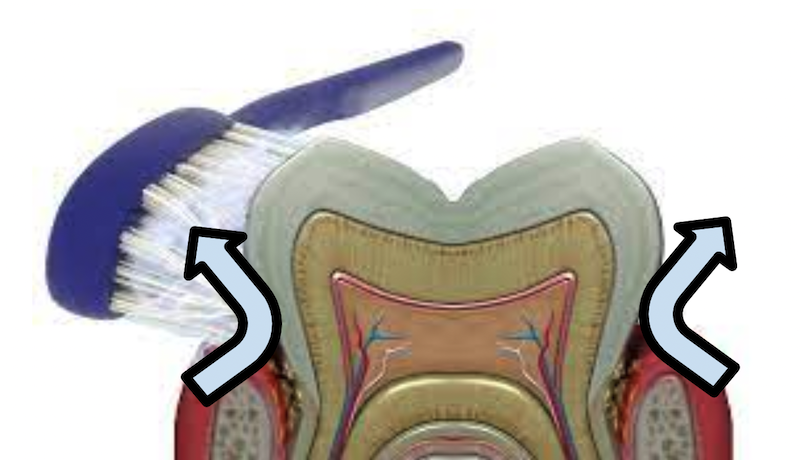Autoimmunity Unlocked
5 Keys to Transform Microbiome, Immune, and Digestive Health and Reclaim Your Life. A 5R+ Holistic Guide for Rheumatoid Arthritis, Lupus, and Crohn’s (Encyclopedic Edition)
by Anar R Guliyev, M.D. www.autoimmunityunlocked.org
Appendix 1: Illustrations, Tables, and Videos
- Introduction
- Hope in the Face of the Incurable
- Immune System — The Good, the Bad, and the Ugly
- Key 1. Dysbiosis: Repopulate the Microbiome
- Key 2. Inflammation: Reduce
- Key 3. Leaky Gut: Repair
- Key 4. Lazy Gut: Reawaken
- Key 5. Factors Beyond Digestive Health: Recondition
Introduction

For detailed diagrams, see Bonus 1. Printable Mind Map of 5R+ Keys and Tactics
Hope in the Face of the Incurable

Immune System — The Good, the Bad, and the Ugly
The Ugly: An Ailing Immune System



The Good: The Holistic Way to Restore Immune Health
Immune Cells in Your Body’s Ecosystem

DILL+: Locks and Vicious Cycles
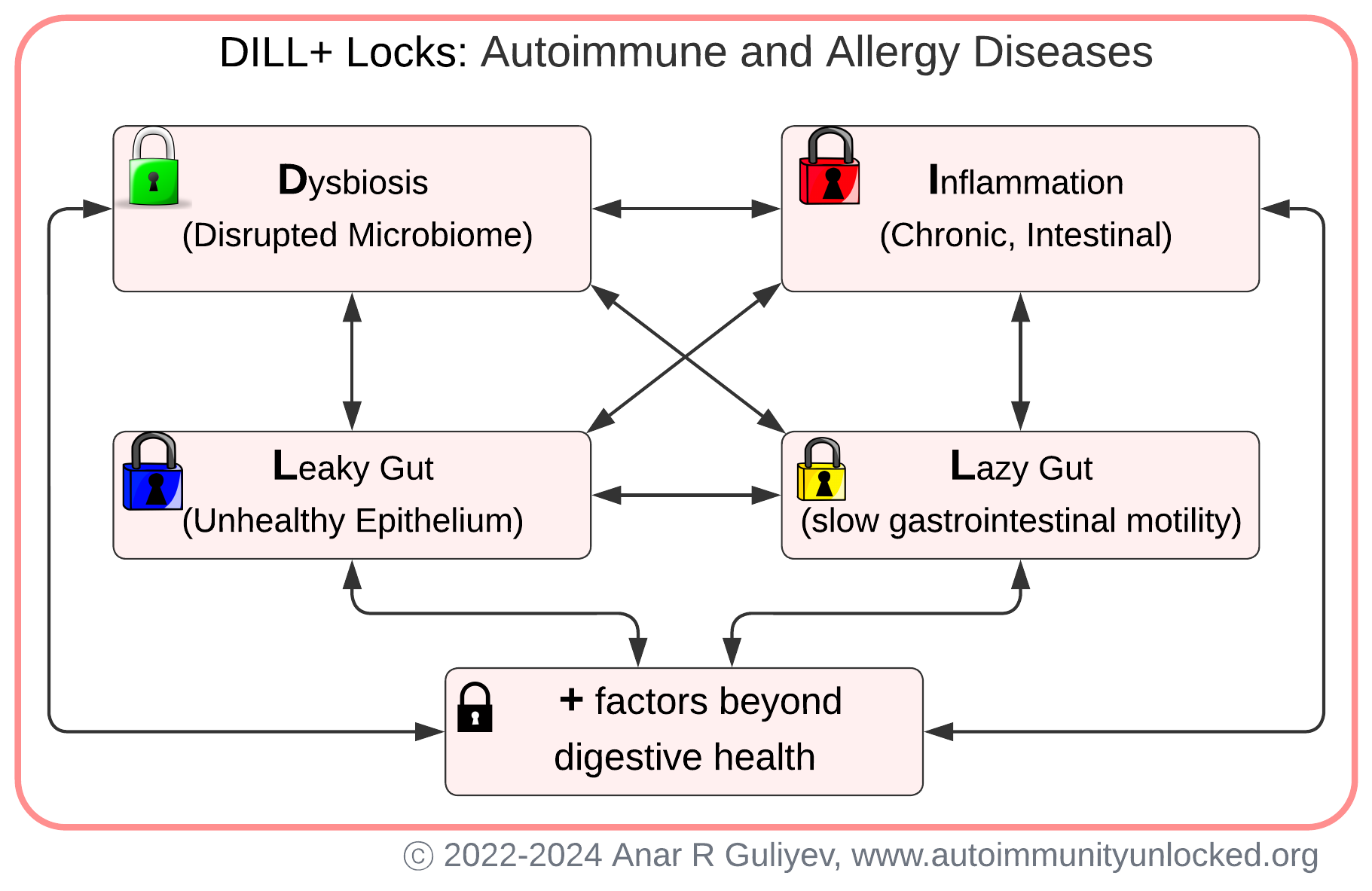

5R+: Understanding the Healing Strategy
| Locks (DILL+) | Keys (5R+) |
|---|---|
| Dysbiosis | Repopulate the microbiome with healthy bacteria |
| Inflammation | Reduce inflammation |
| Leaky gut | Repair the intestinal epithelium |
| Lazy gut | Reawaken intestinal motility |
| + Other pathological factors | Recondition factors beyond the digestive system |
As Your Healing Progresses: + Reintroduce (gradually) healthy foods removed during the active healing phase These steps lead to: Restored immune system |
|
| Figure 2.8 - DILL+ "locks" and corresponding 5R+ "keys" | |
 |
Complete Printable Mind Map of 5R+ Keys and Tactics: download at https://bonus.autoimmunityunlocked.org/ |
Key 1. Dysbiosis: Repopulate the Microbiome


For Colorful Mind Map of All 5R+ Keys and Tactics, see Bonus 1
The Last Discovered Organ That Reshapes Our Understanding of Health
Microbial Forces Within Us

A Busy, Adaptable Organ
| Body Function | Normal Microbiome Functions | Consequences of Compromised Function |
|---|---|---|
| Control of microorganisms | Prevent pathogenic infection through microbiome inertia. | Tendency toward food infections, bowel disorders, SIBO, ulcers. |
| Gut lining health | Produce an energy source for gut epithelium. | Unhealthy gut epithelium, malabsorption, hypovitaminosis, leaky gut, ulcers, anemia, food intolerance, some allergies. |
| Gut motility | Stimulate normal gut motility. | Lazy gut, constipation, diarrhea. |
| Nutrient status | Synthesize certain required nutrients—essential amino acids, some vitamins (K, B12). | Lack of some nutrients, anemia, bleeding tendency, unhealthy gut epithelium. |
| Immune system | Maintain a healthy immune system. | Immune disorders—allergies, autoimmune diseases, higher probability of some cancers. |
| Note: Research continues to uncover additional microbiota functions and their associations with diseases beyond those listed above. | ||
| Figure 3.2 - Normal microbiome functions and consequences of compromised function | ||
Maintaining a Resilient Microbiome
| Factors That Keep Your Microbiome Healthy | |
|---|---|
| Factors: | We Cover These In: |
| Digestive Process, Stomach Acid, Bile, Saliva, Mastication | Key 1. Dysbiosis: Repopulate the Microbiome. |
| Food Ingredients and Eating Habits | Key 1. Dysbiosis: Repopulate the Microbiome. |
| Bacterial Ecosystem Inertia and Resilience | Key 1. Dysbiosis: Repopulate the Microbiome. |
| Intestinal Immune System Status | Key 2. Inflammation: Reduce. |
| Digestive System Epithelium | Key 3. Leaky Gut: Repair. |
| Gastrointestinal Motility | Key 4. Lazy Gut: Reawaken. |
| Continuous Contact with Germs | Key 5. Factors Beyond Digestive Health: Recondition. ➢ The Hygiene Paradox: When Cleaning Backfires. |
| Climate and Microclimate | Key 5. Factors Beyond Digestive Health: Recondition. ➢ Environment and Climate: Where You Live Matters. |
| Figure 3.3 - Factors that keep your microbiome healthy | |
Healing an Ecosystem

Dimension 1: Microbiome Composition
Variety — Farmland vs. Forest

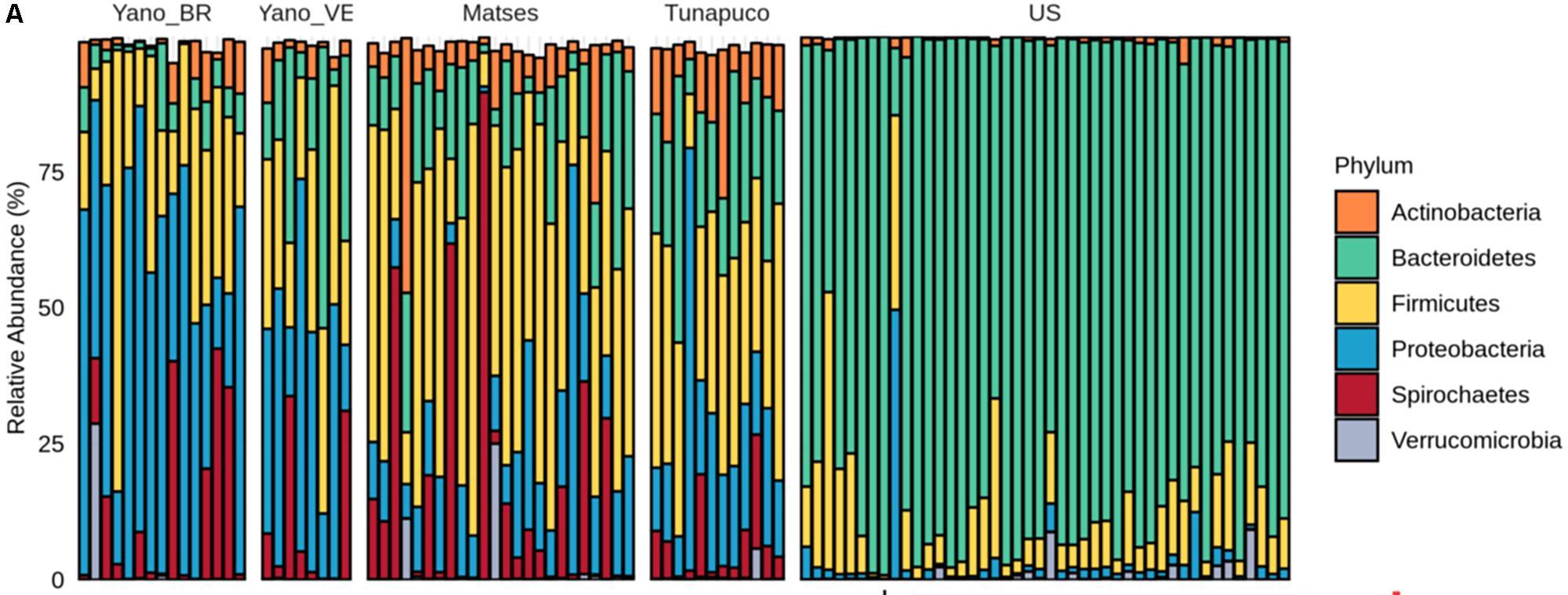
Actively Repopulate
Probiotics
For a collection of recipes, see Bonus 2. The Art of Fermentation: Delicious Vegetable and Dairy Probiotics Recipes
Food diversity


Dimension 2: Microbiome Distribution

Feeding Your Enemies
Sweet Does Not Equal Good
Natural Sweeteners
Added Sugars Labels
| Added Sugars Labels | ||
|---|---|---|
|
|
|
| Figure 3.9 - Added sugars labels | ||
Unnatural Sweeteners
Unnatural Sweeteners Labels
| Unnatural Sweeteners Labels | ||
|---|---|---|
|
|
|
| * Some of these ingredients are synthetic, while others, despite being plant-based, remain unnatural as regular components of the human diet. | ||
| Figure 3.10 - Unnatural sweeteners labels | ||
Starch: From Protagonist to Bit Player
| Starchy Foods | ||
|---|---|---|
| Nutritious natural foods—rich in starch, including resistant starch, and packed with protein, fiber, and other essential nutrients. | 1. Most nutritious |
|
| Natural foods high in starch but with lower levels of resistant starch and less protein and other nutrients. | 2a. More nutritious |
|
| 2b. Less nutritious |
|
|
| Processed starchy foods made from refined carbohydrates that lack resistant starch and other beneficial nutrients. | 3. Not nutritious |
|
| Figure 3.11 - Starchy foods categories | ||
Other Risks to Your Microbiome Health
Antibiotics
Antibiotics Residues in Food
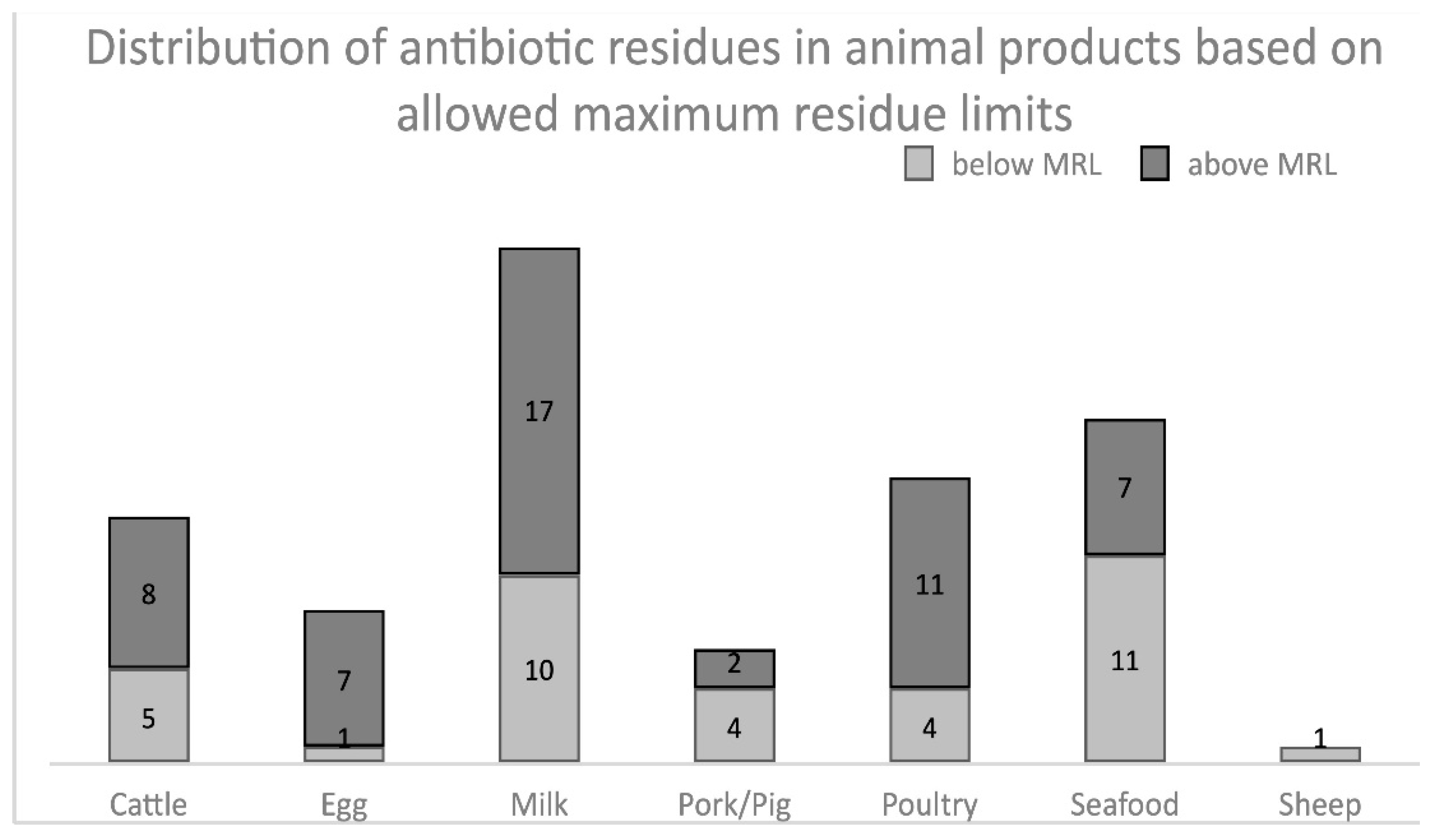

Chemical Additives and Toxins in Our Food
Chemical Toxins in a Polluted World
Microplastics and Nanoplastics

Heavy Metals and Chelation Foods



Key 2. Inflammation: Reduce


For Colorful Mind Map of All 5R+ Keys and Tactics, see Bonus 1
Inflammation and Other DILL+ Factors

Inflammatory Foods
Fats and Oils
| Fats and Oils Cheatsheet | |||
|---|---|---|---|
| Type | Class | Consistency | Products |
| Saturated fats | solid at room temperature |
|
|
| Unsaturated fats | N-3 (omega-3) rich Oils | liquid at room temperature |
|
| N-6 (omega-6) rich Oils |
|
||
| Other Oils |
|
||
| Trans Fats and Hydrogenated Oils | Partially Hydrogenated (Trans Fats) | Solid or semi-solid at room temperature |
|
| Fully Hydrogenated |
|
||
|
* The highlighted categories are recommended as your primary sources of oils/fats.
** Some studies suggest canola oil may increase inflammatory markers, so it is better to avoid it. |
|||
| Figure 4.2 - Fats and Oils Cheatsheet | |||

Individual Food Reactions
Eliminate-Reintroduce-Reset Technique (ERR)
ERR Journey Plan
| Food Baskets—The Big Picture | |||
|---|---|---|---|
| Green Basket (1st choice) |
|
||
| Blue Basket (2nd phase) |
|
||
| Yellow Basket (borderline) |
|
||
| Orange Basket (minefield) |
|
||
| Red Basket (avoid) |
|
||
|
Figure 4.4 - Food Baskets: The Big Picture
For detailed lists, see Bonus 3. Food Baskets: Foods Ranked by Their Impact on the Gut-Microbiome-Immune Ecosystem |
|||
Cheatsheet of Inflammatory Foods and their Alternatives
| Worse | Better | ||
|---|---|---|---|
| Oils and Fats | |||
|
|
|
||
| Proteins and Animal Products | |||
|
|
Relatively ok alternatives: |
||
| Carbohydrates | |||
|
|
|
||
| Spices and Herbs | |||
|
|
|
||
| Figure 4.5 - A Cheatsheet of Inflammatory Foods and their Alternatives | |||
Key 3. Leaky Gut: Repair
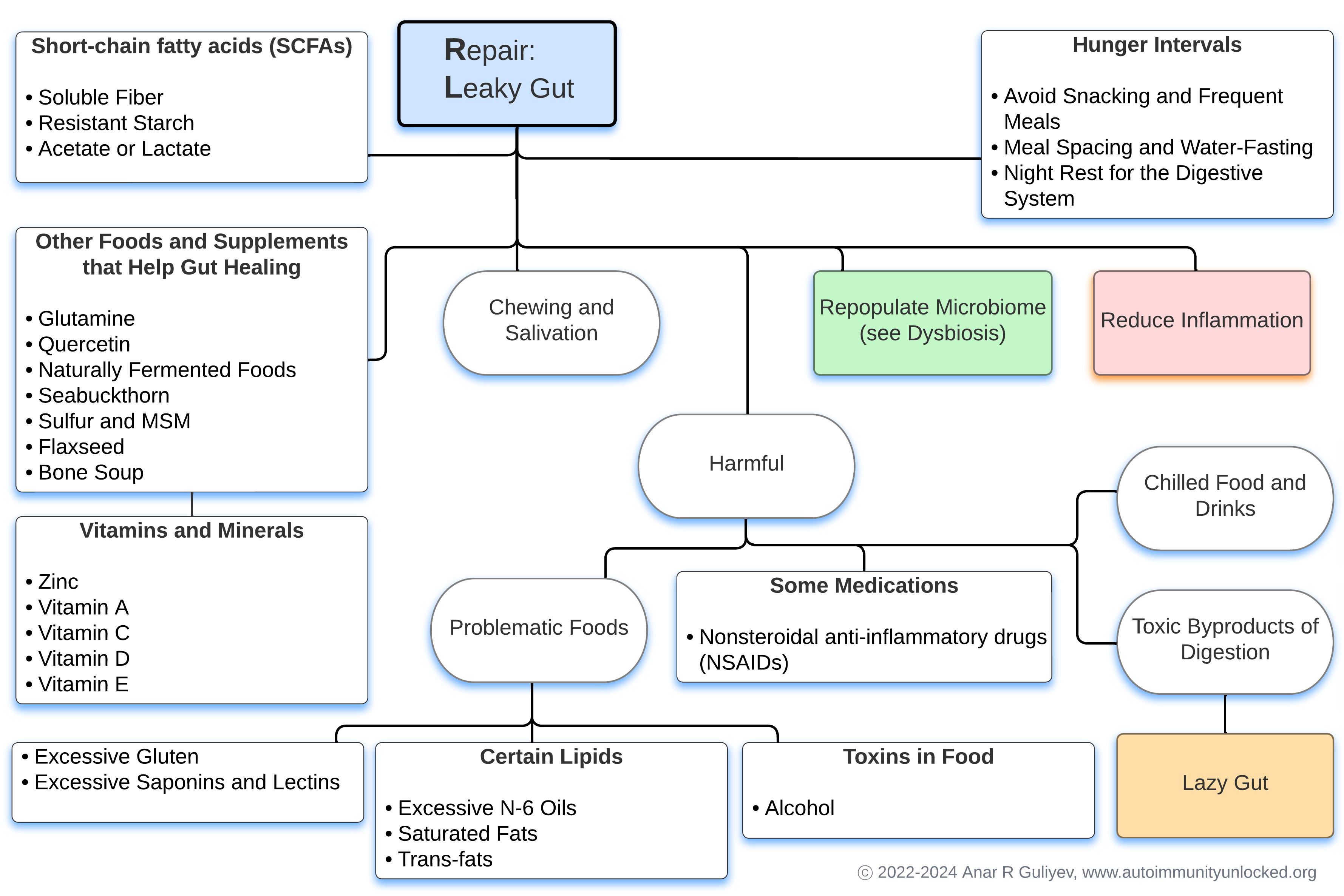
For Colorful Mind Map of All 5R+ Keys and Tactics, see Bonus 1
Constant Repair

Gut Lining and Other DILL+ Factors

Eliminate Obstacles
Obstacle #4: Harmful Food Ingredients
Gluten
| Gluten-containing products | Gluten-free products |
|---|---|
|
|
Gluten-free grains:
Other gluten-free options: |
| Figure 5.3 - Gluten-containing and gluten-free products | |
Saturated Fats and Excessive Omega-6 Oils
Obstacle #5: Medication
NSAIDs
| Most common NSAIDs | ||
|---|---|---|
| Generic Name | Synonyms, Brand Names | Selectivity |
| Acetylsalicylic acid | Aspirin, ASA, Ecotrin, Aspir-Tab, Bayer Aspirin | Non-selective |
| Celecoxib | Celebrex, Celebra, Onsenal | Relatively more selective |
| Diclofenac | Voltaren, Cataflam, Dicloflex, Solaraze, Zipsor, Pennsaid, Voltaren Gel, Cambia, Flector Patch | Less selective |
| Etoricoxib | Arcoxia | Relatively more selective |
| Etodolac | Lodine, Lodine XL | Relatively more selective |
| Ibuprofen | Brufen, Motrin, Advil, Nuprin, Nurofen | Non-selective |
| Ketoprofen | Orudis, Oruvail, Actron, Ketoral, Ketoprofen Delayed-Release, Orudis KT | Non-selective |
| Meloxicam | Mobic, Mobicox, Arava, Vivlodex, Movalis | Less selective |
| Naproxen | Naprosyn, Naxen, Aleve, Anaprox, Naprosyn EC | Non-selective |
| Parecoxib | Dynastat | Relatively more selective |
| Figure 5.4 - Most common NSAIDs | ||
Active Repair
Nutrition For the Gut Epithelium
Soluble Fiber
See The Fiber Paradox: Why Eat What You Can’t Digest
Resistant Starch
See Starch: From Protagonist to Bit Player
Key 4. Lazy Gut: Reawaken
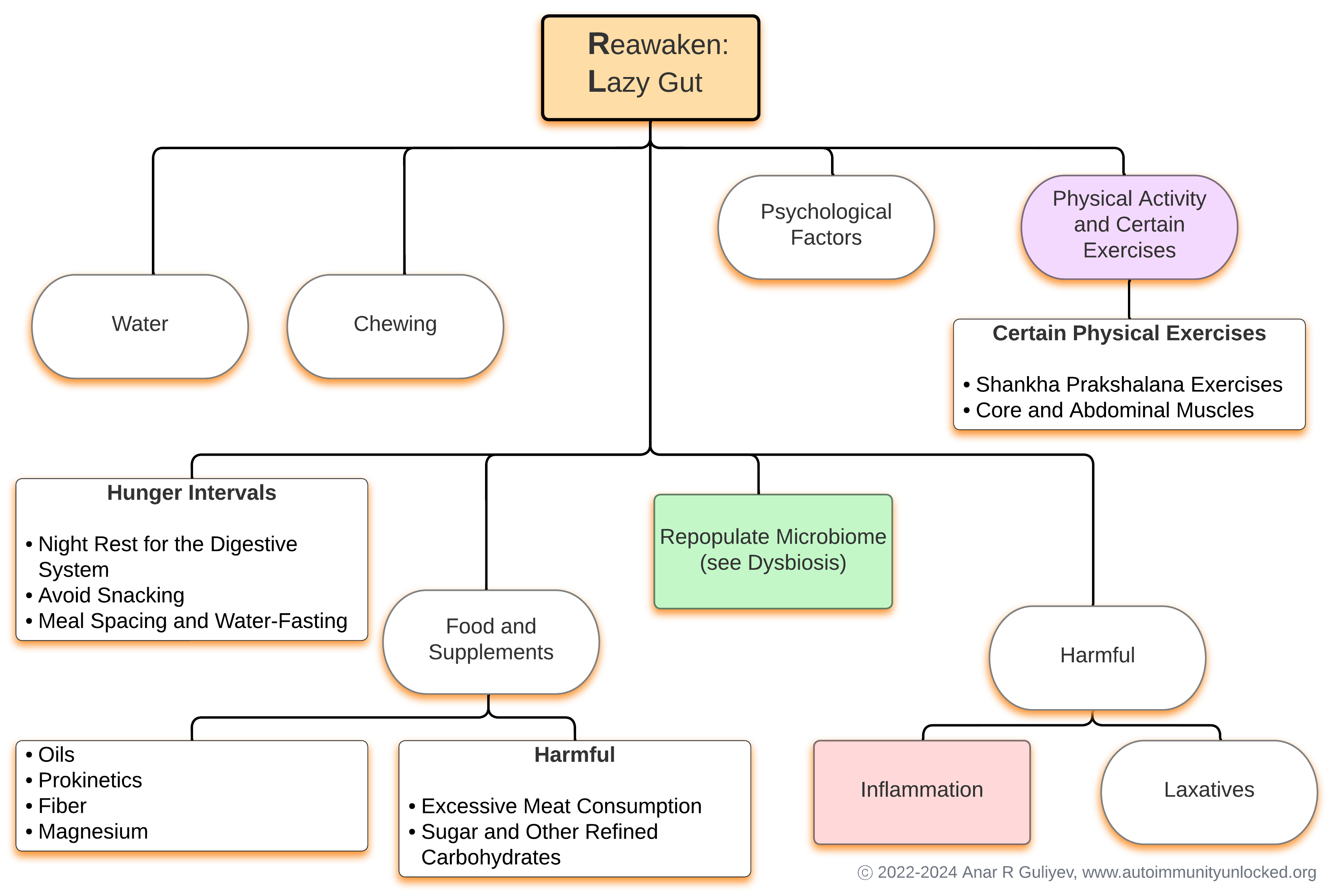
For Colorful Mind Map of All 5R+ Keys and Tactics, see Bonus 1
Gut Motility: Speedy or Sluggish
Bowel Transit Time

Gut Motility and Other DILL+ Factors

Physical Activities for Optimal Bowel Transit
Strengthening the Core and Abdominal Muscles
Flushing the Gut: Ayurvedic Shankha Prakshalana Technique Simplified
Your Food and Gut Motility
The Fiber Paradox: Why Eat What You Can’t Digest
Two Types of Fiber: Tailoring Intake for Specific Conditions
| Soluble Fiber | Insoluble Fiber | |
|---|---|---|
| Types |
|
|
| Properties |
|
|
| Can cause problems in people with |
|
|
| Mitigate issues by |
|
|
| Sources |
|
|
| Notes |
|
|
| Figure 6.7 - Two types of fiber: Tailoring your intake for specific conditions | ||
Key 5. Factors Beyond Digestive Health: Recondition

For Colorful Mind Map of All 5R+ Keys and Tactics, see Bonus 1
Hormones. Why Do Females Experience More Autoimmune Conditions?

Physical Exercises
Core and Abdominal Muscles
See Strengthening the Core and Abdominal Muscles
Improve Blood Circulation in Your Limbs: A Simple Exercise
Sleep and Circadian Rhythms
Sleep’s Role in Combating Chronic Illness
| Age Group | Recommended Hours of Sleep Per Day | |
|---|---|---|
| Newborn | 0-3 months | 14-17 hours |
| Infant | 4-12 months | 12-16 hours |
| Toddler | 1-2 years | 11-14 hours |
| Preschool | 3-5 years | 10-13 hours |
| School Age | 6-12 years | 9-12 hours |
| Teen | 13-18 months | 8-10 hours |
| Adult | 18-64 years | 7-9 hours |
| 65 years and older | 7-8 hours | |
| Figure 7.3 - Recommended Hours of Sleep Per Day. Source: Centers for Disease Control and Prevention, https://www.cdc.gov/ | ||
Circadian Rhythms
Sleep Cycle Disruption
Recommended Mobile apps: See Snoring and Sleep Apnea: Hidden Threats to Brain Health
Screens, Bulbs, and Night Light
| Light Type | Temperature Range (Kelvin) | Applications |
|---|---|---|
| A candle | 1800K | |
| Very warm, Soft | 1800K - 2400K | Creating a cozy and relaxing atmosphere, ideal for bedrooms. |
| Warm, Soft. | 2500K - 3200K | Providing a warm and inviting ambiance, suitable for bedrooms, living rooms, etc. |
| Neutral, Cool white | 3300K - 4000K | Promoting alertness and focus, perfect for kitchens, bathrooms, home offices, etc. |
| Daylight | 4100K - 5000K | Simulating natural daylight, enhancing task performance and mood. Suitable for home offices. |
| Cool daylight, Natural sunlight | 5500K - 6500K | Mimicking natural sunlight, ideal for areas requiring bright illumination, such as workshops. |
| Blue sky | 10000K | |
| Figure 7.4 - Light temperature range and applications | ||
Snoring and Sleep Apnea: Hidden Threats to Brain Health
|
|
|
| Figure 7.5 - Recommended mobile apps | |
Oropharyngeal Exercises
Eliminate Other Autoimmune Triggers
Oral Microbiome, Gums, and Teeth
Build a Winning Oral Health Routine
Mechanical Cleaning
